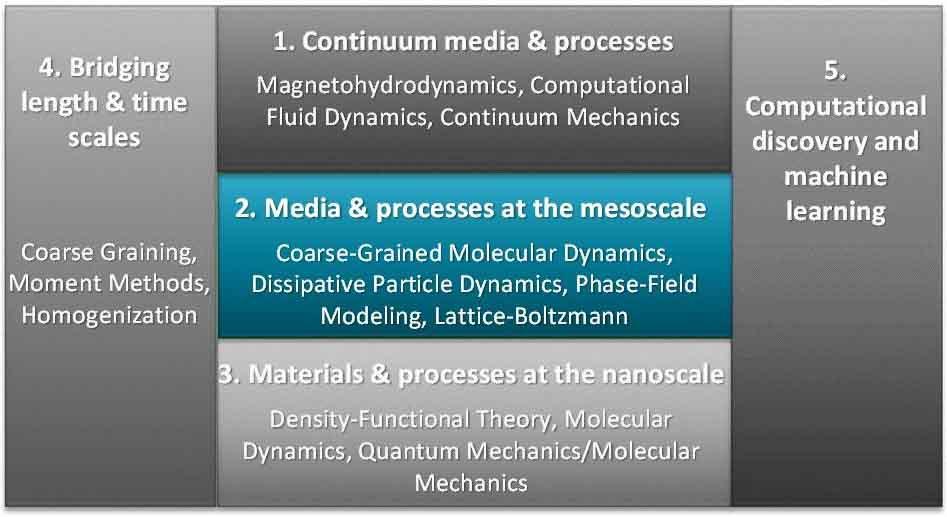Porous media are a textbook example of materials with structures at the mesoscale. Understanding of these materials is crucial in numerous energy-related areas.
Examples are batteries for storage of electrical energy, membranes, zeolites, and Metal-Organic Frameworks (MOFs) for separation of ions or gasses, phase-change materials and salt-hydrates for heat storage, geothermic heat production and storage, oil and gas extraction (conventional and via fracking), soil deformations and earth tremors caused by hydrocarbon extraction, etc.
Since it is often not clear what approaches should be used at the mesoscale, there are many opportunities for breakthroughs. Computational mesoscale research is also essential for PFMs, where the interaction with the plasma leads to embrittlement of the wall material by the formation of cauliflower-like structures on the mesoscale. Such processes are experimentally studied in the Magnum-PSI facility. Research that would fit into this research line encompasses:
- Coarse-grained MD simulations of polymer membranes for gas separation, fuel cells and flow batteries (strong relation to experimental research at DIFFER),
- Simulations of chemical heat storage in phase-change materials and salt-hydrates (strong relation to experimental research in several TU/e groups),
- Phase-field simulations of mesoscale phase separation in organic solar cells (strong relation to Artificial Leaves research at DIFFER and TU/e),
- Lattice-Boltzmann simulations of earth quakes in glassy materials,
- Simulations of liquid-solid interactions and fracking in oil and gas extraction and geothermic energy production,
- Simulations of flow in porous media, and
- Lattice-Boltzmann simulations on biofuels.



